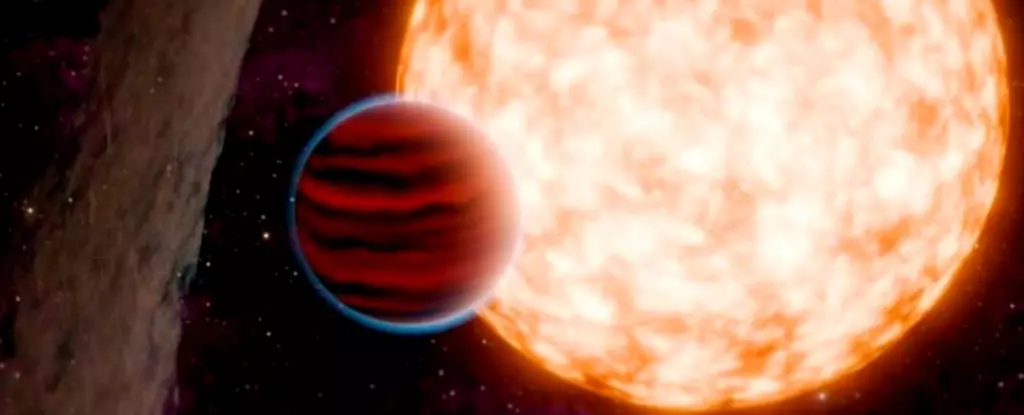Recent advancements in astronomical observation have unveiled one of the youngest known planets in the universe: TIDYE-1b, also designated as IRAS 04125+2902 b. This celestial entity, estimated to be merely 3 million years old, presents a unique opportunity for scientists eager to understand the intricacies of planetary formation. When juxtaposed with Earth, which is approximately 4.5 billion years old, the age difference is striking — TIDYE-1b is 1,500 times younger than our home planet. Such a discovery opens a compelling window into the primordial conditions that lead to planet formation, fundamentally challenging existing models and assumptions about how planetary bodies come into existence.
Madyson Barber, a graduate student at the University of North Carolina at Chapel Hill and the lead author of the study published on this discovery, asserted, “Astronomy helps us explore our place in the universe — where we came from and where we might be going.” The find of TIDYE-1b allows astronomers to essentially travel back in time, providing a rare opportunity to witness planetary formation in real-time. This planet offers a more dynamic perspective on the birth of worlds, suggesting that planetary genesis can occur in previously unconsidered ways.
TIDYE-1b was detected using the transit method, wherein the planet passes in front of its star, effectively dimming the starlight that reaches observers. This method, expertly executed by NASA’s Transiting Exoplanet Survey Satellite (TESS), has previously revealed over a dozen young planets ranging from 10 to 40 million years old. The detection of TIDYE-1b, however, is particularly remarkable given the scarcity of extraordinarily young planets that have been visualized due to the typical obscuration by gas and dust in the protoplanetary disc — a process that generates new worlds.
Planets usually form within a relatively flat disk of dust and gas, which accounts for the planar arrangement observed in our own solar system. However, the case of TIDYE-1b is extraordinary: rather than aligning along the traditional ‘pancake-flat’ disk characteristic of most planetary systems, this young planet orbits its star at an unusual angle. Andrew Mann, an associate professor at UNC-Chapel Hill, pointed out that this misalignment challenges long-held theories surrounding planetary formation and invites researchers to reassess the dynamics involved in the birth of planets.
Another noteworthy aspect of TIDYE-1b is its close proximity to its host star, completing an orbit approximately every nine days. This rapid orbit provides valuable data about the conditions surrounding the young planet, paving the way for researchers to hypothesize about its development into a super-Earth or a sub-Neptune type planet — planetary categories that are absent from our solar system yet prevalent elsewhere in the Milky Way galaxy. Though TIDYE-1b lacks the density of Earth, its size is about 11 times greater in diameter, presenting an exciting example of the diversity found in planetary typologies.
The discovery of TIDYE-1b bears significant implications for our understanding of the timing of planet formation. Traditionally, scientists believed that planets could not form until protoplanetary discs had cleared out, often taking over five million years. However, this finding serves as conclusive evidence that young planets can emerge much sooner than previously thought. The absence of detectable planets younger than 10 million years has often been attributed to their hidden nature, rather than their nonexistence.
As we dive deeper into the understanding of TIDYE-1b, it becomes clear that our comprehension of early planetary formation is incomplete. Each insight brings us closer to unraveling the mysteries of the universe and how terrestrial worlds like Earth came into being. This discovery signifies a pivotal moment not only for astronomy but more broadly for our quest to decipher the celestial tapestry that binds the cosmos together.


Leave a Reply